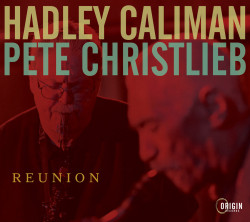Podcast Summary
Connecting with neighbors and strengthening communities: Building strong connections with neighbors and communities brings social support and prepares for emergencies. Initiatives like Neighbor to Neighbor encourage this engagement.
Building strong community connections can bring numerous benefits, from providing social support to preparing for emergencies. Neighbor to Neighbor is an initiative that encourages individuals to connect with their neighbors and strengthen their community. Meanwhile, technology, particularly artificial intelligence, is expected to play a significant role in shaping the future. In the realm of podcasts, shows like Technically Speaking and Conversations with UNK offer insights into various aspects of life, from technology advancements to personal growth. And in the natural world, beavers continue to amaze us with their engineering skills and adaptability. Their ability to build dams, lodges, and store food for the winter showcases their resourcefulness and resilience. So, whether it's through community engagement, technological advancements, or observing the natural world, there are always opportunities to learn and grow.
Medieval and Renaissance Illustrations of Beavers: A Fascinating Study in Inaccuracy: Despite limited exposure, medieval and renaissance illustrations of beavers often contained inaccuracies due to their nocturnal behavior, remote habitats, and the near extinction of Eurasian beavers. Illustrations often depicted beavers as big cats or other animals, and included the strange detail of beavers chewing off their testicles while being hunted.
The depiction of beavers in medieval and renaissance manuscripts is a fascinating topic, not just because of the real-life biology of beavers, but also because of the deeply off the mark illustrations of them. These inaccuracies could be due to limited exposure to the animals, their nocturnal behavior, and remote habitats. Additionally, the Eurasian beaver was once hunted to near extinction, and both European and North American beaver populations faced threats from fashion trends like beaver hats and beaver-derived products. One intriguing detail in these illustrations is the depiction of beavers chewing off their testicles while being pursued by hunters. This detail is found in various bestiaries and illuminated manuscripts, and while it may seem strange, it can be recognized due to the consistent scene of beavers on the run, pursued by hunters and their dogs. These illustrations often depict beavers as big cats or other animals, adding to their mystique.
Medieval Beaver Art: Hybrid Creatures and Symbolism: Medieval art depicted beavers as hybrid creatures, combining animal traits, often with testicle biting symbolizing fertility, rebirth or punishment. Hunters were shown with dogs and implements, amidst nature. Symbolism varied, from realistic to fantastical.
The discussion revolved around various depictions of beavers in medieval art. The beavers were often portrayed as hybrid creatures, combining elements of different animals such as horses, felines, and snakes. Many of these images showed the beavers biting their own testicles, while some did not. The hunters in these scenes were usually depicted with hunting dogs and various hunting implements. The art styles varied, with some images featuring more realistic depictions and others displaying a more fantastical and stylized appearance. The discussion also touched upon the potential symbolism and meanings behind these images. For instance, the beaver's testicle biting could represent fertility, rebirth, or even punishment for overindulgence. The images often contained elements of nature, such as trees and vegetation, and the hunters were sometimes depicted with unique characteristics, like a wizard-like appearance or surfer-inspired hair. Overall, the discussion provided insights into the creative interpretations of beavers in medieval art and the potential symbolic meanings behind these depictions.
Medieval depictions of beaver hunts: Medieval illustrations showed beavers in unusual ways, often as other animals, with humorous elements, possibly highlighting their cleverness and cunning to avoid capture.
Medieval illustrations of beaver hunts often depicted beavers in unusual ways, sometimes even transforming into other animals. For instance, in one illustration, a beaver was shown as a dog with bulbous eye sockets and floating testicles, while in another, it was a fox lying on its back with its belly exposed. These illustrations often contained humorous elements, such as the hunter dancing and blowing his horn, or the beaver projecting its testicles into the air. The reasons for these depictions are not entirely clear, but they may have been intended to highlight the cleverness and cunning of the beaver, which was believed to be able to avoid capture by revealing that it had already lost its prized body parts. Overall, these illustrations offer a fascinating glimpse into medieval perceptions of beavers and the artistry of the time.
Myth of Beavers' Testicle-like Glands Debunked: Beavers do not have testicle-like glands, but rather have castor glands and anal glands, which release odorous products for scent marking, and the misconception likely comes from their close proximity in the cloaca.
The idea of beavers chomping off, dropping, shooting, or projectile pooping testicles is a myth, known as the vulgar error. Hunters in the past were after castoreum, a valuable substance derived from beavers. Beavers have castor glands and anal glands, both located in a cavity near their hindquarters. These glands release odorous products used in scent marking, which is crucial for their territorial behavior. The misconception likely comes from the fact that the glands and their openings are located near each other in the cloaca, leading to confusion. The castor glands, not the anal glands, are the source of castoreum, which is described as butter-like. The myth of beavers' testicle-like glands is an exaggeration with no basis in biological reality.
Beavers use anal and castor glands to mark territory and protect fur: Beavers use anal glands to secrete a butter-like substance for territory marking and castor glands to produce a yellowish, urine-like substance that turns brown and acts as a waterproofing agent for their fur.
Beavers use two distinct methods to mark their territory and protect their fur. Beavers have anal glands that secrete a butter-like substance called castoreum, which they rub on objects to mark their territory. They also have castor glands that produce a yellowish, urine-like substance that turns brown when exposed to air and sunlight. This castoreum is urinated out and serves as a waterproofing agent for their fur. Humans have historically used castoreum for various purposes, including as a perfume and medicinal ingredient. It can be harvested by milking a live beaver or by extracting it post-mortem and smoking it for preservation. The substance has a pungent odor and looks like shriveled-up glands when dried. While ancient texts suggest beavers may have voluntarily dropped their castoreum glands in dangerous situations, modern methods involve extracting the substance through more controlled means. In modern times, beavers are often hunted for their pelts and glands, but efforts are being made to promote community building and support for beavers in their natural habitats. For instance, the Neighbor to Neighbor network in California aims to help people build stronger communities and prepare for emergencies. Additionally, Astepro offers a fast-acting nasal allergy spray for those suffering from seasonal allergies.
Beavers: Peaceful or Fierce?: Beavers, though generally peaceful, can display aggressive behavior when provoked or feeling threatened, resulting in attacks on humans with serious consequences.
Beavers, though typically perceived as peaceful and non-aggressive animals, can display ferocious behavior when provoked or feeling threatened. The description from ancient Roman naturalist Pliny the Elder of beavers' strength and ferocity may seem exaggerated, but there have been recorded instances of beaver attacks on humans, some resulting in serious injuries or even death. Beavers should be respected as wild animals and given a wide berth to avoid any potential confrontations. A famous CBC Radio interview recounts a man's harrowing experience with an aggressive beaver that attacked him after he accidentally came into contact with it while trying to cross a flooded bridge. The man's sympathy for the beaver, despite the attack, highlights the animal's instinctual response to defend itself when feeling cornered. Overall, while beaver attacks are rare, it's important to remember that they are wild animals and should be treated with caution and respect.
Pliny's Misconception of Beaver Behavior: Pliny incorrectly believed beavers rub their anal glands on trees to leave a false scent trail for hunters. In reality, they are just marking their territory.
Pliny's description of beavers rubbing their anal glands against trees to rid themselves of the scent and give hunters a false trail is a common misconception. This error likely comes from the fact that hunters may observe beavers marking their territories with these scent glands and then see them rubbing the area against trees, leading to the assumption that they are leaving behind the castor. However, the substance being rubbed off is actually the anal gland secretion. This idea connects to the territorial nature of beavers and their use of scent markings to ward off other beavers. Pliny also mentions the beaver's alleged defense capabilities in relation to the sea cow, which is known to expel its gall for medicinal purposes. The idea that certain creatures leave behind parts of their body or vomit substances as a distraction for predators is not entirely unfounded, but the specific claim about the beaver is not true. Additionally, some animals, such as lizards, consume their shed skin for nutritional reasons, contrary to the belief that they do it to spite predators. Another interesting natural phenomenon is autotomy, a survival strategy where animals self-amputate when threatened, such as lizards releasing their tails. This strategy allows the animal to escape the predator and offers a consolation prize. While most examples of autotomy involve ejections or releases, there may be cases where the animal must actively sever its body parts with its teeth or claws.
Evidence of Beaver Castoreum Use Dates Back 6000 Years: Beaver castoreum, a substance produced by beavers, has been used by humans for over 6000 years for toughening wood, medicinal purposes, and baiting. The Talton people specifically used it to maintain their weapons and hunting implements.
Beaver castoreum, a substance produced by beavers, has a long history of human use dating back at least 6000 years. The earliest evidence comes from a throwing dart found in the Yukon Territory with a red orange residue containing the organic materials of beaver castoreum. This substance was likely used to toughen wood for ancient hunters, and later, for medicinal and baiting purposes among First Nations people. The Talton people specifically used it to maintain their weapons and hunting implements, providing an oily treatment for the wood. The beaver's use of castoreum in their fur for waterproofing purposes is similar, demonstrating the versatility and value of this substance throughout history.
Historical uses of castoreum: Castoreum, derived from beaver anal glands, has a long history of medicinal and non-medicinal uses, including abortive purposes, fever reduction, sleep aid, colic treatment, gout relief, toothache and earache remedy, scent, and flavor enhancer. Its potential medicinal properties may be linked to its salicylate content.
Castoreum, a substance derived from beaver anal glands, has a long history of various uses, both medicinal and non-medicinal. In Roman times, it was used for abortive purposes, while in the 12th century, it was used to reduce fever. In colonial America, it was used as a means of staving off sleep and encouraging sleep, as well as for treating colic, gout, toothaches, and earaches. The potential medicinal properties of castoreum may be linked to its salicylate content, which is related to the active ingredient in aspirin. Castoreum has also been used for its scent and as a flavor enhancer, particularly to enhance flavors of raspberry, strawberry, and vanilla, and to give perfumes a leathery odor. It is still technically an FDA approved natural flavoring in the United States, but it is rarely used today. Additionally, there is a Swedish spirit called Baverhoek that uses castoreum, which some adventurous imbibers have sought out for unique tasting experiences. However, the distinct scent of castoreum can linger on the skin long after consumption.
Exploring the History of Beaver Shout, a Unique Alcoholic Beverage: Beaver castoreum, an organic substance used in alcoholic beverages, was the focus of this episode. Despite the author's efforts, no evidence of a cocktail made with beaver shout was found. The use of organic materials in alcohol is not new, with some cultures using alcohols with snakes, scorpions, and other creatures.
Beaver castoreum, a substance obtained from the castor glands of beavers, has been used in various alcoholic beverages throughout history. The author of the blog post tried to find evidence of a cocktail made with beaver shout, a spirit made from beaver castoreum, but could not find any. The use of organic materials in alcohol is not unique to beaver shout, as some cultures have used alcohols with snakes, scorpions, and other organic materials. The author expresses respect for the beaver and its unique characteristics, and encourages listeners to share their experiences or impressions of beaver shout if they have tried it. The episode concludes the two-part series on beavers and their various depictions in history and culture. Neighbor to Neighbor, a California volunteer network, is encouraged as a way to build meaningful social bonds and prepare for emergencies by helping neighbors in need. The episode is brought to you by Visible, the wireless company that makes wireless transparent.
Affordable and Transparent 5G Plan from Visible: Visible offers an unlimited 5G plan for $25/month with no hidden fees, encouraging listeners to stay connected and informed on social and civil rights issues through TMI podcast.
Visible by Verizon offers a one-line plan with unlimited 5G data for just $25 a month, including taxes and fees. This transparent pricing ensures no hidden fees or surprises. With this affordable and reliable plan, Tamika D. Mallory and The General, hosts of TMI, encourage listeners to join them every Wednesday on the Black Effect Network as they discuss social and civil rights issues, pop culture, and politics. Listen to TMI on the Black Effect Podcast Network, iHeartRadio, Apple Podcasts, or wherever you get your podcasts. This straightforward and accessible plan from Visible allows you to stay connected and informed while making a positive impact on the world.





 "02:46 The Doug Beavers 9 - Blues On The Corner"
"02:46 The Doug Beavers 9 - Blues On The Corner" "07:51 Hadley Caliman and Pete Christlib - Nasty Green"
"07:51 Hadley Caliman and Pete Christlib - Nasty Green" "13:11 Edward Simon - Colega"
"13:11 Edward Simon - Colega" "24:36 Nick Rixen Quartet - Contemplation"
"24:36 Nick Rixen Quartet - Contemplation" "33:13 Al Daniels - Tenaya The Falls"
"33:13 Al Daniels - Tenaya The Falls" "38:26 Colette Wickenhagen - On Green Dolphin"
"38:26 Colette Wickenhagen - On Green Dolphin"
